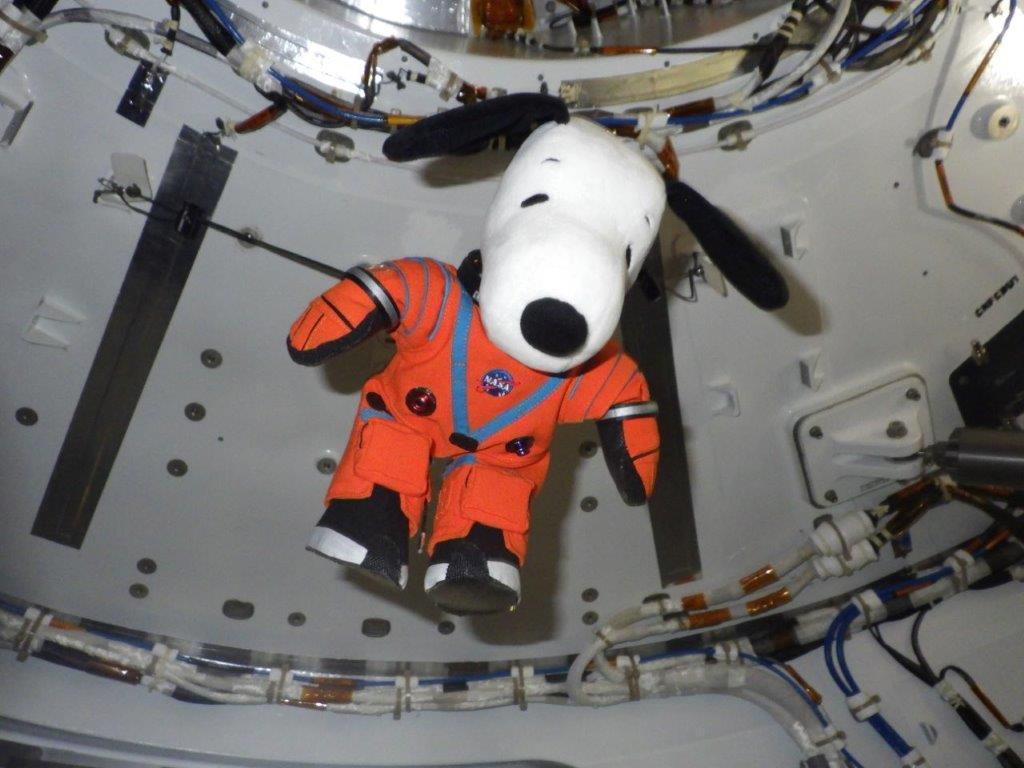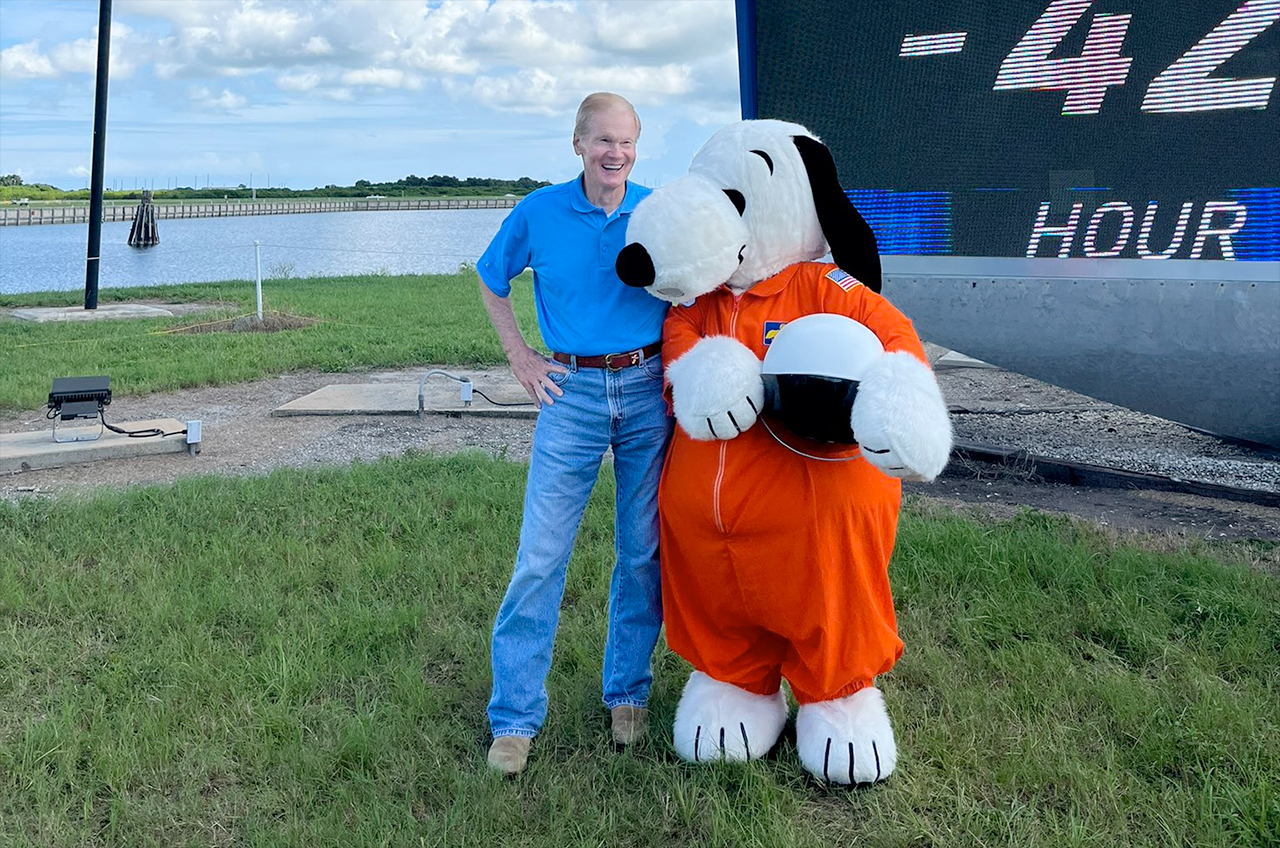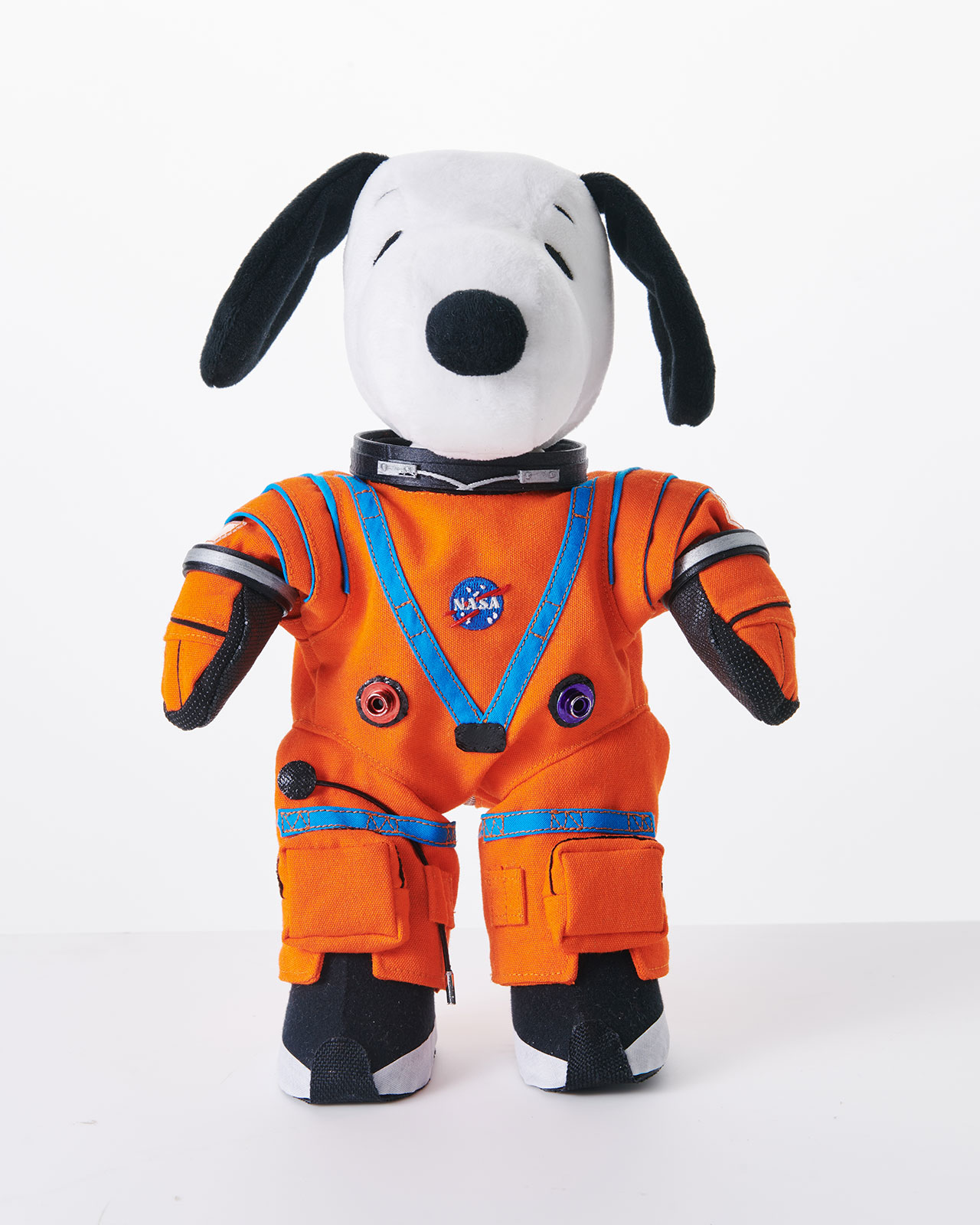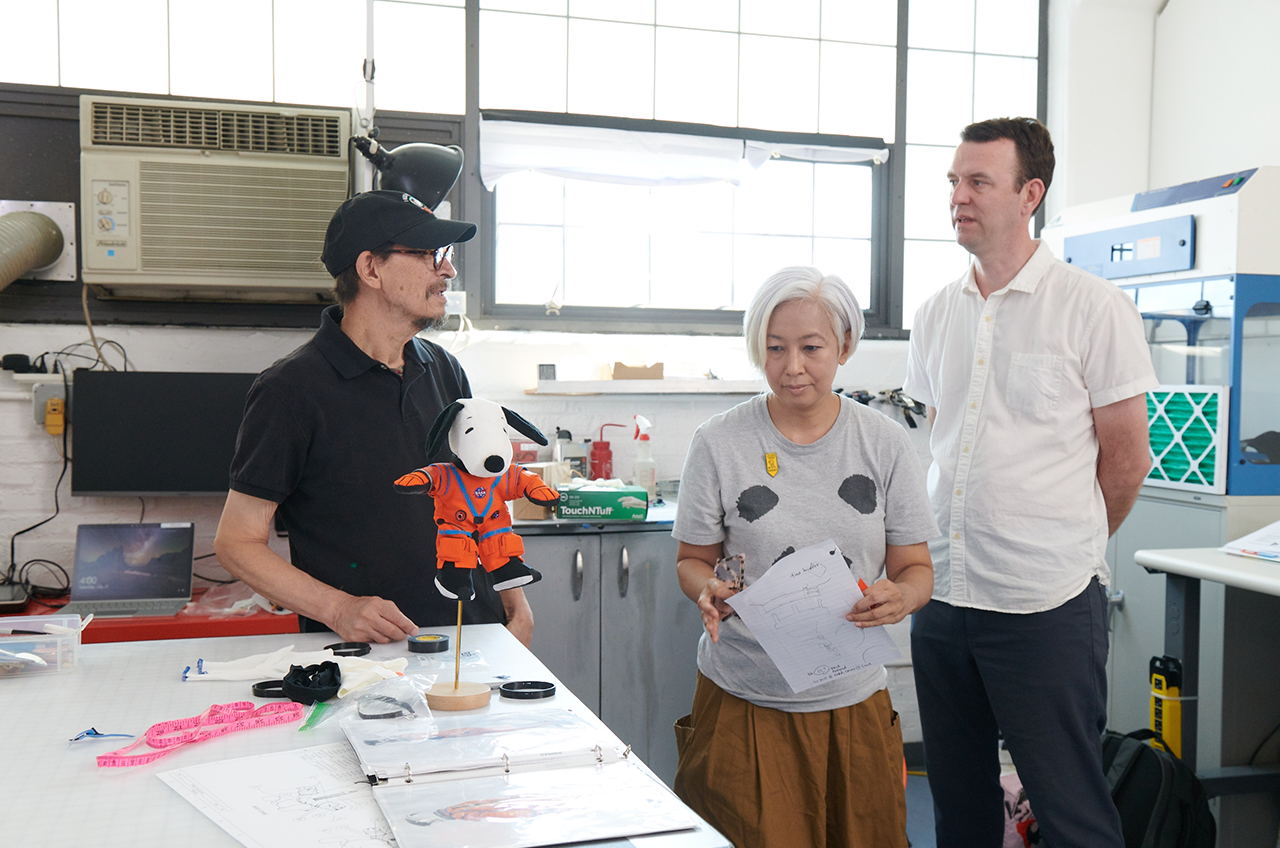Spacesuited Snoopy doll floats in zero-g on moon-bound Artemis 1 mission
"When NASA was identifying what the ZGI would be, it just seemed to make sense that it was Snoopy."

Snoopy, "the world-famous astronaut," has made it into space — again.
The white-spotted dog, who became "the first beagle on the moon" in a series of Peanuts comic strips in 1969, is now on his way back to the moon aboard NASA's Artemis 1 mission. Snoopy, in the form of a small doll dressed in a one-of-a-kind replica of NASA's pressure suit for Artemis astronauts, is the "zero-g indicator," or ZGI, on board the space agency's now lunar-orbit-bound Orion spacecraft.
"Oh, I'm sorry, Snoopy. They had to put you on a leash because you're hanging in the Orion capsule right now," NASA Administrator Bill Nelson said during an August photo op with the beagle (in this case, a costume character, also wearing the bright orange spacesuit). "Snoopy was the last person to be put in Orion when they closed the hatch."
Related: NASA's Artemis 1 moon mission: Live updates
More: 10 wild facts about the Artemis 1 moon mission

Snoopy's leash, or tether, was to keep the doll in view of a camera inside Orion's cabin. Traditionally, zero-g indicators have been flown on crewed spacecraft as a visual sign for the astronauts that they have reached orbit. The Artemis 1 Orion is flying without a crew — other than Snoopy, four LEGO minifigures, Shaun the Sheep and three instrumented manikins — so the doll was flown for the benefit of the public watching the launch on NASA's television channel or website.
"When NASA was identifying what the ZGI would be, it just seemed to make sense that it was Snoopy," Melissa Menta, senior vice president for marketing and communications at Peanuts Worldwide, said in an interview with collectSPACE.com. "Snoopy has been part of the NASA history for so long."
Snoopy has been associated with NASA since 1968, when the space agency approached Peanuts artist Charles Schulz for permission to use his comic strip dog as a safety mascot in the wake of a fire that claimed three astronauts' lives. That same year NASA introduced the Silver Snoopy award, an honor presented only by astronauts to members of the NASA workforce whose outstanding achievements contributed to mission safety and success in human spaceflight.
Get the Space.com Newsletter
Breaking space news, the latest updates on rocket launches, skywatching events and more!
"Sparky always said that he was very proud to have worked with NASA and to have had them choose his characters," Jeannie Schulz, the widow of Charles "Sparky" Schulz, said in a 2019 interview with collectSPACE.

The partnership first reached space when NASA's Apollo 10 command and lunar modules launched with the crew-chosen call signs "Charlie Brown" and "Snoopy." The Artemis 1 mission lifted off from the same launch pad as Apollo 10, Complex 39B at NASA's Kennedy Space Center in Florida, on Wednesday (Nov. 16).
In 2018, 50 years after Snoopy first entered service for the U.S. space program, NASA and Peanuts Worldwide expanded the use of the beagle and the Peanuts gang to help promote NASA's Artemis missions and its ongoing efforts to engage students in science, technology, engineering and mathematics (STEM) activities.
Since then, Peanuts has licensed companies like Hallmark to produce spacesuited Snoopy dolls, including one that was flown to the International Space Station. The ZGI on Orion, though, is a custom creation.
To create the doll, Peanuts turned to Martin Izquierdo, a noted costume designer specializing in miniatures, who had previously made the outfits for a Snoopy-themed fashion exhibit. Izquierdo came out of retirement to fabricate the Snoopy-sized pressure suit for the Artemis 1 mission, working together with Ted Southern, the president and CEO of Final Frontier Design, a firm developing spacesuit parts for NASA and private spaceflight companies.

"NASA sent us reference materials and they sent us the cloth," said Menta.
Over the next 25 days, Snoopy will float aboard Orion as it makes a close flyby of the lunar surface and then soars well past the moon, traveling farther away from Earth than any spacecraft made for astronauts (or beagles) in history. He will then return home, protected by a heat shield designed to survive a reentry from lunar-return velocities.
Snoopy will splash down on Dec. 11, having added another space mission to his credit. It is not clear what will happen to him after that, although if returned to Peanuts Worldwide, the doll will be destined for the Charles M. Schulz Museum and Research Center in Santa Rosa, California. (A pen nib used by the late comic strip artist to draw Peanuts is also on Orion and will be going to the museum as well).
collectSPACE is grateful to film and TV company Haviland Digital for supporting our Artemis I coverage. Their team has produced and supported titles such as the award-winning "Last Man on the Moon," "Mission Control: The Unsung Heroes of Apollo" and "Armstrong."
Follow collectSPACE.com on Facebook and on Twitter at @collectSPACE. Copyright 2022 collectSPACE.com. All rights reserved.
Join our Space Forums to keep talking space on the latest missions, night sky and more! And if you have a news tip, correction or comment, let us know at: community@space.com.

Robert Pearlman is a space historian, journalist and the founder and editor of collectSPACE.com, a daily news publication and community devoted to space history with a particular focus on how and where space exploration intersects with pop culture. Pearlman is also a contributing writer for Space.com and co-author of "Space Stations: The Art, Science, and Reality of Working in Space” published by Smithsonian Books in 2018.In 2009, he was inducted into the U.S. Space Camp Hall of Fame in Huntsville, Alabama. In 2021, he was honored by the American Astronautical Society with the Ordway Award for Sustained Excellence in Spaceflight History. In 2023, the National Space Club Florida Committee recognized Pearlman with the Kolcum News and Communications Award for excellence in telling the space story along the Space Coast and throughout the world.










